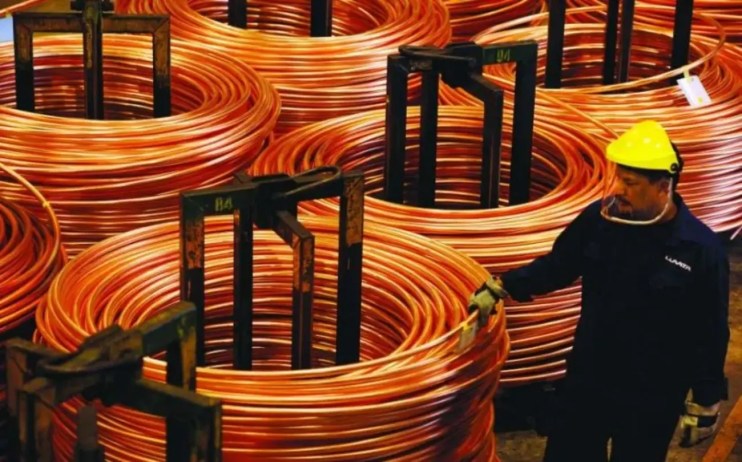Why are investors flocking to copper?

Copper has rallied to its highest price point in over a year this week despite lingering concerns about the state of the global economy.
Prices hit nearly $9,400 (£7,444) a ton yesterday, up $300 (£237) from the start of March and more than $1,200 (£950) since the outset of February.
Dovish comments from US Federal Reserve Chairman Jerome Powell, which supported expectations of an imminent start to a US rate cut cycle, seemed to spark the rally.
Lower interest rates help reduce the cost of carrying and storing commodities, particularly bulk metals like copper, which are used in abundance across multiple industries.
If the US’s jobs data show a positive trajectory, that could spell a strong basis for manufacturing and infrastructure gains.
But as ever, China is at the forefront of the copper chaos.
China trends support copper prices
At best estimates, it devours up to 70 per cent, and climbing, of the world’s copper for its voracious property and manufacturing industries.
Handily, China is also the third-largest producer of copper from mines and keeps significant stockpiles of the red metal on hand to fuel its infrastructure projects.
However, Chinese smelters have been scrambling to secure raw material supplies as a result of mine disruptions, which have hamstrung its domestic supply.
Additionally, the smelting industry has expanded far beyond China, and countries are now becoming less reliant on the Chinese smelting output as a supplier.
Chinese plants are getting closer to issuing joint production cuts as a response.
Kieron Hodgson, an analyst with Panmure Gordon, said in a note circulated today that a “rare co-ordinated response” from the China Nonferrous Metals Industry Association would “change the narrative for all” and “significantly tighten” the global copper market, driving prices upward.
This would add to supply squeezes coming from other mining operations in countries like the Democratic Republic of Congo and Zambia.
Copper bulls have been harder and harder to come by over the last 12 months, but it appears that the trend is beginning to turn, albeit stoked by fear.
Recovering from a tough year
The year 2023 was a perfect storm for the copper industry, which was still reeling from production shutdowns throughout the coronavirus pandemic.
The slow ramp-up of new projects, adverse weather and geotechnical issues, to name a few problems, hit the industry hard, and production grew year-on-year by just 1.9 per cent.
For 2024, that figure is set to more than double to around 3.7 per cent, in spite of the worrying lack of positive forward momentum from China’s property market in spite of government aid packages.
Analysts at Panmure Gordon remind us that copper is trading way above its ten-year average of $6,912, but companies are likely pricing in as-yet undeveloped projects at the five-year average of $7,875.
“Positively, this is below the spot price, reducing the risk of unsustainable economic assumptions of undeveloped projects, albeit, not by much.”
Spot prices are currently up around 3.6 per cent and looking ahead, the firm has optimistically raised its average price estimates for Q2 2024 by nine per cent and by two per cent for Q3.
As of early morning trading today, copper is sitting at $9,359 (£7,411) on the London Metal Exchange.